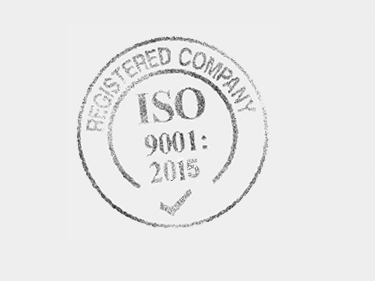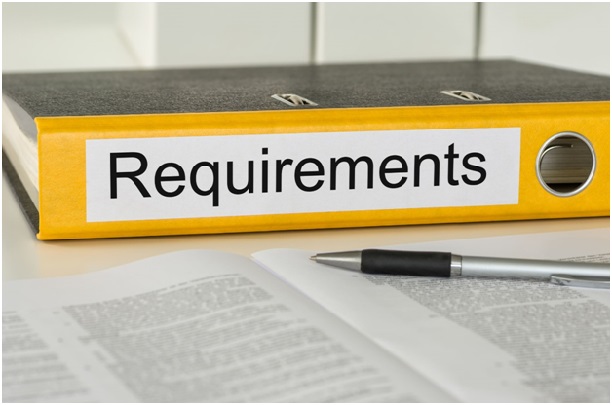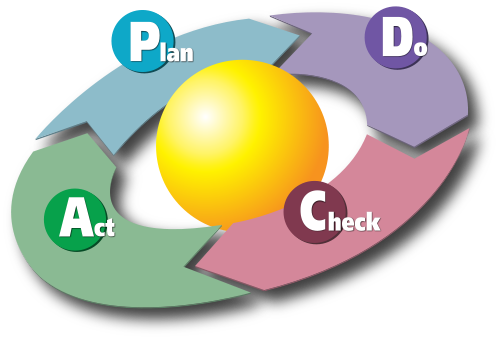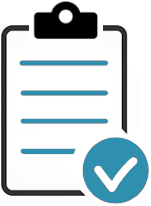To attain ISO certification, a company or organization must submit documents that report its internal processes, procedures and standards. These documents (or Quality Management System) determines that a company is able to provide quality products and services consistently.
Contents
Are you aiming to achieve ISO certification? Looking to find the latest ISO 9001 requirements? Well, they have changed considerably since the last version of ISO 9001. Everything you need to know about the latest requirements — monitoring, documents and records is right here.
There are mandatory and non-mandatory requirements; to find out which of the requirements you should document, please see below.

Creating, implementing and maintaining your Quality Management Systems (QMS) is an important documentary requirement for any company. It formalizes the procedures and policies that promote the quality of products and services that a company provides.
One way to do this is to follow the ISO standard and gain ISO 9001:2015 certification.
The international standard that is known as the ISO 9001:2015 gives a list of requirements for a system that determines that a company is able to provide international-quality products and services consistently.

ISO 9001:2015
Through the implementation of the standard, ISO 9001:2015 aims to improve customer experience and satisfaction.
It also aims to improve the internal system of a company so that it is able to produce quality services and products while promoting a culture that is aimed towards growth and continuous improvement.
The ISO stipulates quality management principles, which, when complied with by certified companies, reassures clients that the company has established a proper Quality Management System.
To put it simply, ISO certification shows that your company can be trusted.
Moreover, it means that the products and services delivered by a company is of international-quality; aligned with different companies from countries all over the world.

All the ISO 9001 requirements are set out by ISO in ten clauses.
Mandatory requirements need to be complied with, while non-mandatory requirements may be submitted for documentation purposes. To be certified compliant with ISO 9001:2015, the following documents must be submitted.
All of the ISO 9001 requirements are fully-documented and explained in our Quality Manual Template.
After reading through the lists above, you might be thinking that his must include a lot of paper work!
However, do note that because each company is unique and is run differently, having this certification lets other companies and people know that what your company does and produces passed an international standard of quality.
Not only does the ISO certificate benefit your consumers, it also benefits your company itself.

There are over 350 individual ISO 9001 requirement clauses that businesses can use to implement a quality management system as a formal stepping-stone to begin to continually improve performance and enhance customer satisfaction.
Formal ISO certification to international standard ISO 9001:2015 follows after successful QMS implementation, operation and certification body assessment.
Within ISO 9001 2015, there are 25 occurrences of the requirement to retain and maintain documented information.
We define an ISO audit checklist as an elemental internal audit checklist that comprises a tabulated list of ISO 9001 requirements that is used monitor the compliance status of each clause against an organization's processes when implementing and assessing a new quality management practices.
For ISO 9001 certification, the mandatory quality management documentation requirements includes documented information such as the quality policy, quality objectives, scope of the quality management system, a description of the organization's processes, management review minutes, internal audit reports,
Effective processes are at the core of ISO 9001:2015. You should begin by reviewing and updating your quality manual, QMS documentation, and undertaking a thorough gap analysis of your existing processes to determine the extent to which quality management systems meet the ISO 9001 requirements.
Successful quality management and ISO 9001 certification requires risk based thinking, customer focus, process approach
Whilst there are many international standards that specify requirements, ISO 9001 remains the most widely adopted quality management system standards in the world. Other popular standards include ISO 14001 - environmental management, ISO 45001 - occupational health and safety, and ISO 27001 - IT security and data management systems.
There are over 350 individual ISO 9001 requirements that businesses should adopt and integrate into their business processes when implementing an effective quality management system. However, business must also consider and adopt any relevant contractual or customer requirements, and relevant statutory and regulatory requirements that affect the functionality of products and services.
There are 7 key principles of quality management that form the foundation of ISO 9001:2015 and are relevant to the entire organization.
Customer focus - is about how you meet customer and regulatory requirements, assessing customer satisfaction and exceeding their expectations by the quality of your products and services
Leadership - is about establishing strategic direction and operational purpose
Engagement of people - is about providing sufficient training, knowledge, competence, and empowerment to improve quality
Process approach - is about the Plan, Do, Check, Act (PDCA) cycle and the sequence and interaction of inputs, activities and outputs
Continual improvement - is about innovation, identifying customer needs, opportunities, root cause analysis, and ability to react to change to ensure continuous improvement
Evidence‐based decision making - is about analyzing process data, levels of customer satisfaction, process performance assessment, and risk-based thinking
Relationship management - is about maintaining relationships with relevant interested parties and providers in the supply chain
Conformity assessment to ISO 9001 certification is carried out by an independent certification body who must be accredited to ISO 17025 . The requirement for attaining ISO 9001 certification is driven by the need for commercial competitiveness.
QMS is an anacronym for Quality Management System.
ISO 9000 is a family of quality management standards. ISO 9001:2015 specifies requirements, while ISO 9000 clarifies the fundamental terms and definitions of successful quality management.
The ISO 9000 quality management principles are embodied with in the individual requirements of ISO 9001:2015. Apply the principles in the context of your business's own particular operations by reviewing and documenting its activities in the context of each principle.
As stated in the ISO 9001 requirements, top management are clearly responsible for the quality management system, whilst all employees are responsible for delivering quality to their individual aspects of work. Depending on company culture, Top management usually delegate, by appointing quality professionals to upper level management teams.
A Quality Manager is often responsible for analyzing quality management system data and performance evaluation by monitoring and measuring the achievement of the quality objectives, quality policies, undertaking internal audits and for improving the quality of products and services.
Video — Introduction to ISO 9001:2015 Quality Management System Requirements
All of the ISO 9001 requirements are fully-documented and explained in our Quality Manual Template.
We have procedures, templates, checklists, process maps, forms and gap analysis tools to help your documentation without missing a single input or output.
Before you invest all the hours reinventing the wheel, before you spend countless dollars outsourcing the task — try our templates.
Updated: 3rd March 2022
Author: Richard Keen

Richard is our Compliance Director, responsible for content & product development.
But most importantly he is ISO's biggest fanboy and a true evangelist of the standards.
Learn more about Richard

Don’t Try to Manage It All Alone!
Our ISO Auditors and Quality Manager Trainers have been in this industry for years, and since 2002 we’ve been providing thousands of small businesses and large corporations with the tools they need to get certified.
Instead of trying to create everything you need to follow this process from scratch, use ours. We have procedures, templates, checklists, process maps, forms and gap analysis tools to help your documentation without missing a single input or output.
Before you invest all the hours reinventing the wheel, before you spend countless dollars outsourcing the task — try our templates.